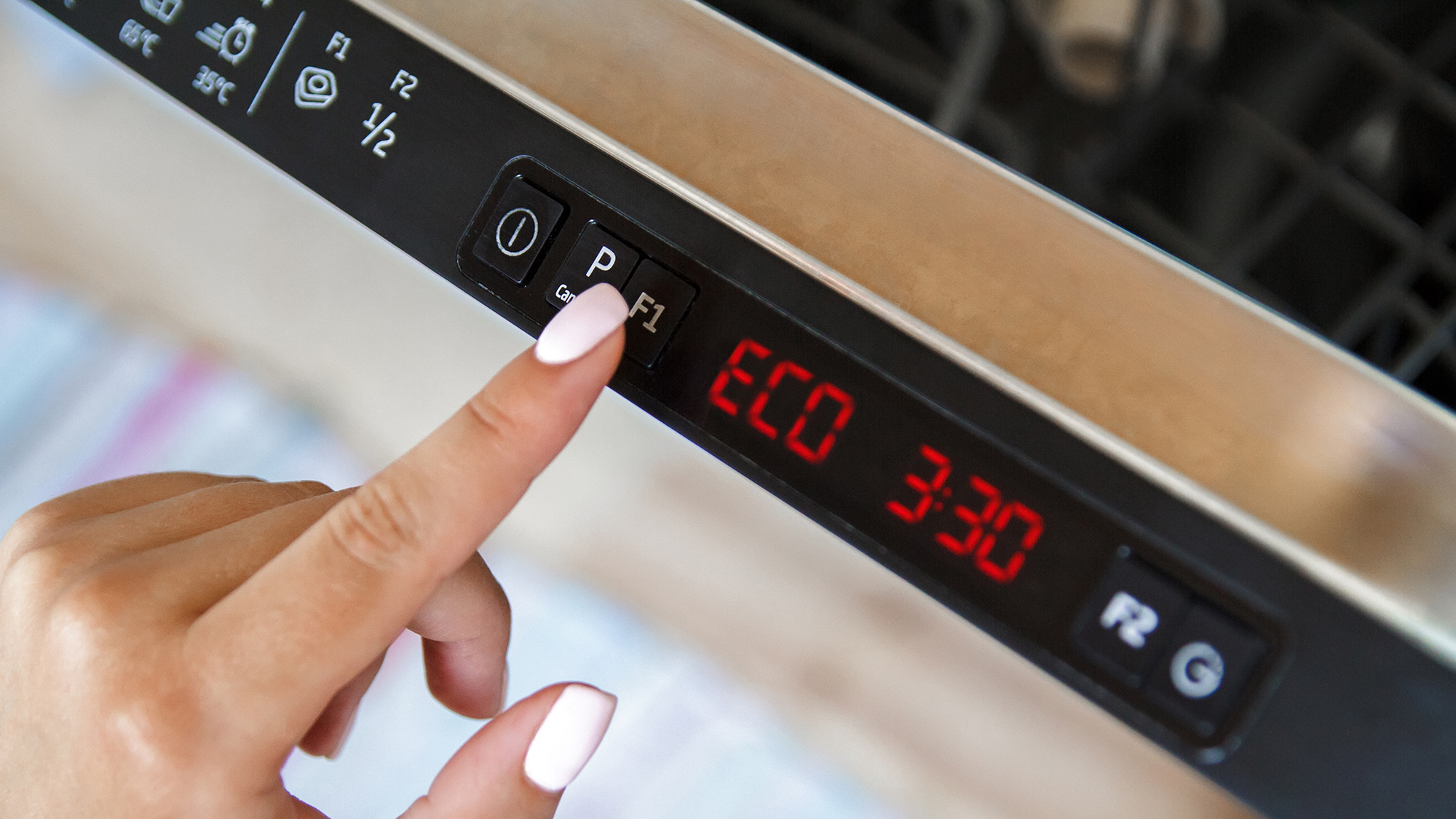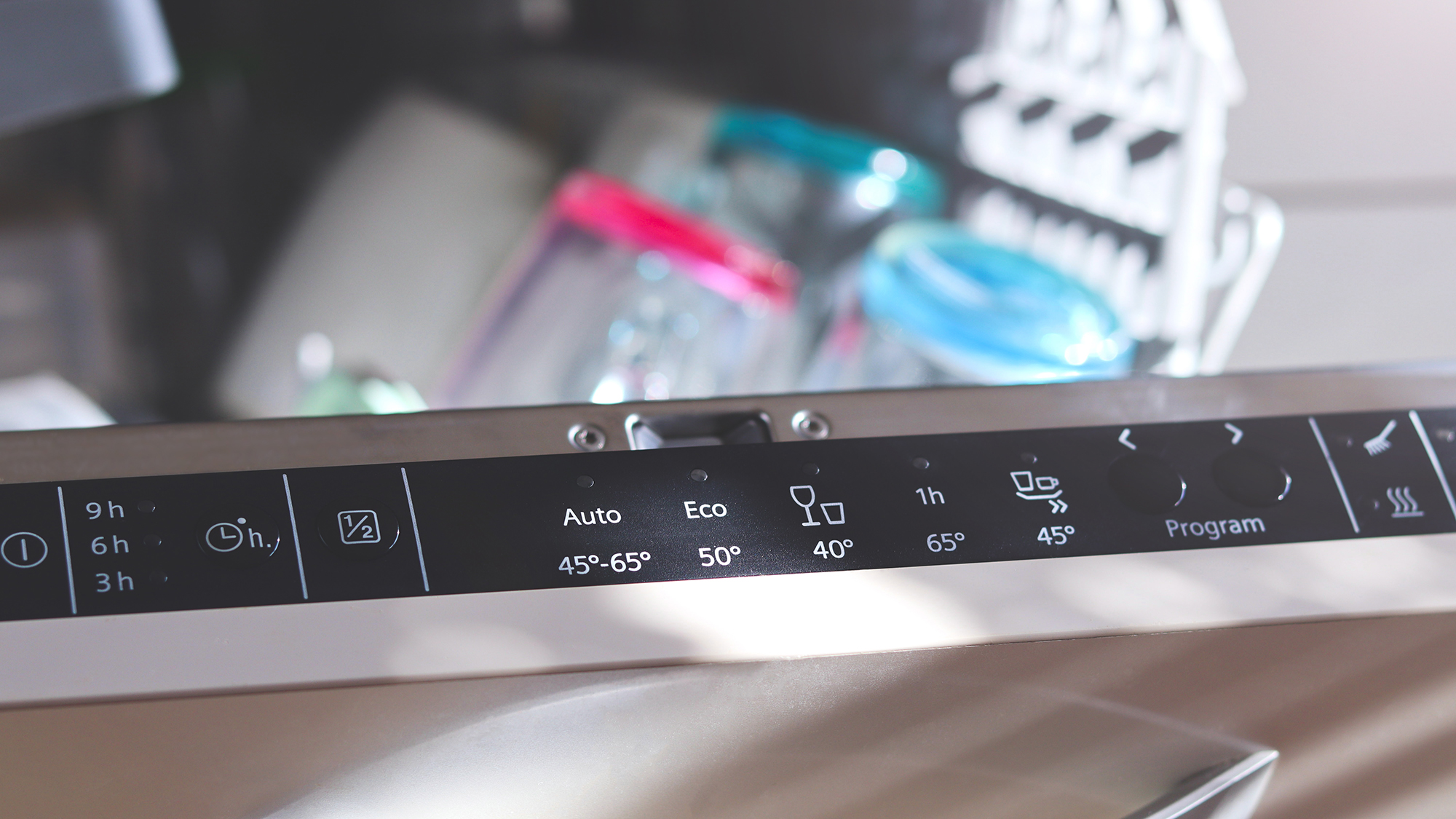This overlooked dishwasher setting lets you slash energy consumption in your home
Find out more about the energy-saving program that'll boost efficiency

Using your dishwasher is, for most households, a daily chore. Of course, it's a lot simpler than washing up all your dishes by hand, but the loading and unloading of a dishwasher tends to result in some heated debate.
Though when it comes to just turning your dishwasher on, it's fairly simple. With the touch of a button, we tend to stick to the same program and settings that we know work. But, have you ever considered running your dishwasher on Eco mode?
It's not just the best dishwashers that have this program that can save you money, but you'll find it on pretty much every modern model. Sure, it's easy to ignore it, if you don't quite understand what it does. But this setting could save you money on water and energy bills, so it's worth taking the time to look into it.
Don't worry, your dishes will still be pristine, but there's more to understand about what the Eco setting does. Fortunately, we'll explain everything below.
What is the Eco setting?

Essentially, the Eco setting is an energy-saving mode that will lower the temperatures of washing and rinsing. So, it'll wash your dishes just like always, but it'll do so with a focus on reducing energy and water consumption.
Pretty much every dishwasher comes with an Eco mode setting and you'll commonly find it on your appliance's control panel — either as a button or a mode on your program select dial.
While this is great, there is a small catch, in order to achieve an eco-saving status, your dishwasher will run at a lower temperature, resulting in a wash cycle that takes longer.
Sign up to get the BEST of Tom's Guide direct to your inbox.
Get instant access to breaking news, the hottest reviews, great deals and helpful tips.
A survey by CHOICE revealed that only one in five people use the Eco option on their dishwasher. With CHOICE whitegoods expert Ashley Iredale saying: "Generally, you'll get a better performance from your dishwasher on a hotter setting. But the trade-off is that it'll use more energy and water, which costs you more."
Eco setting is also available on other large home appliances like your washing machine or tumble dryer. The idea is the same — run your cycle for longer on a lower temperature and save money. So, if you've got the patience to wait, you could be taking advantage of some easy savings.
How much money can you save with the Eco setting?

It's a tricky one to pinpoint exactly as it'll depend on what model you're using and how much your electricity costs. A great way to keep an eye on this though is by using a smart energy meter that'll give you real-time readings on costs and efficiency in your home.
But, if you were to look at how much energy you're saving, Bosch are able to give an estimate. Based on running Eco mode at 120°F / 50°C, a wash cycle in Eco mode uses 0.73 kWh, which will save you around 523 kWh over a year compared to Auto mode. To put this into perspective, they add: "That's enough to power an energy-saving lamp for about 28 months."
For water, it's a similar situation. Depending on the model and make, the amount of water you save using Eco mode will vary.
A test by Which? studied how much money you could save on average. Based on five washes per week running exclusively the main/auto cycle, they revealed it would cost $82.46 (£62.82) a year. For Eco mode, it'd be just $60.75 (£46.13). That's a $109.87 (£83.45) saving over five years — and there's even more money to save if you're used to using quick mode.
Of course, you can always do even better by opting for an eco-friendly dishwasher, and you'll be able to decipher that through its Energy Star rating. And according to Energy Star, if a dishwasher is certified by them, you could save about 5,800 gallons of water over its lifetime.
Are there any drawbacks to the Eco setting?

As mentioned earlier, the Eco mode setting has to complete a longer wash and rinse cycle as it isn't running at such a high temperature. In my experience, the main program takes around two and a half hours, whereas Eco mode is around four. So, if an extra hour and a half is a drawback for you then this may not be a viable option to save money.
Usually though, once you've set your dishwasher off, you're busy with other things rather than waiting for the load to finish. Plus, you won't necessarily generate enough dishes and cutlery to warrant another wash in just four hours, so this may not be a bothersome issue at all.
Of course, if you're in a hurry, there is always the quick wash. Which, as per the Which? study, would be a lot quicker, but ultimately cost you more. All this depends on which model and manufacturer your dishwasher is, with length and cost-efficiency varying.
To help your dishwasher perform at its best, Finish Rinse Aid is an agent that will enhance the drying process and reduce the water spots left on your dishes. This Jet Dry product is also ultra-focused on getting rid of hard water marks and residue for the ultimate shine. So, you can run Eco while still getting the ultimate shine. Plus, for $11 you'll get 225 washes.
When it comes to the efficiency of washing your dishes though, there is always the risk that a lower temperature won't be high enough to tackle dried-on stains and greasier cookware.
For this, it's often recommended to make sure your dishwasher is topped up with an additional treatment, such as Finish Rinse Aid. A product like this enhances your dishwasher's performance and ultimately, how clean it gets your dishes.
More from Tom's Guide
Grace is a freelance journalist working across homes, lifestyle, gaming and entertainment. You'll find her writing for Tom's Guide, TechRadar, Space.com, and other sites. If she's not rearranging her furniture, decluttering her home, or relaxing in front of the latest streaming series, she'll be typing fervently about any of her much-loved hobbies and interests. To aid her writing, she loves to head down internet rabbit holes for an unprecedented amount of time.



